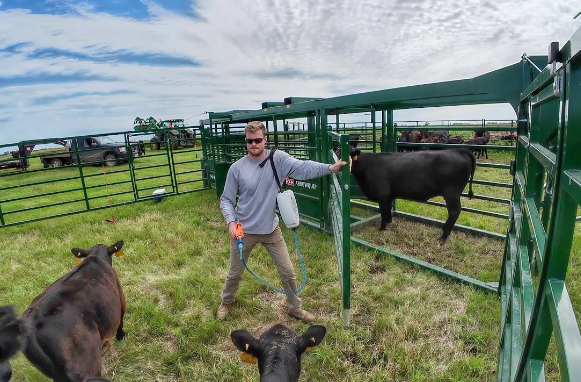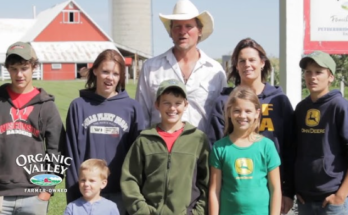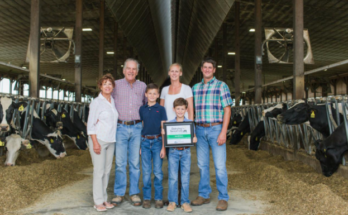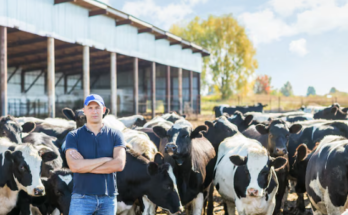Welcome to Sonne Farms! On this channel we showcase numerous jobs a Corn/Soybean/Beef producing operation takes on each day. Hop in the cab or sorting alley with Cole, Brian, and Jeff, to see how life really is for the people that help feed the US and the rest of the world. In addition to Corn, Soy, and Cattle, Sonne Farms puts up grass and alfalfa and sells pure bred Black Angus Bulls in South Dakota.

Green Grass and Black Cattle: Starting a Successful Cattle Farm
Starting a cattle farm can be a profitable and rewarding venture, but it requires careful planning and a realistic approach, especially for beginners. To help ensure success, it’s crucial to focus on key aspects such as budget planning, farm site selection, and operational management. Here’s a guide to help you get started on the right foot.
1. Budgeting for a Cattle Farm
Before anything else, it’s essential to develop a detailed budget. A cattle farm can require significant upfront capital, especially if you’re starting from scratch. The primary expenses will include land, livestock, equipment, and facilities. The cost of purchasing land varies depending on location and size, but expect to pay anywhere from $1,000 to $3,000 per acre. On average, a beginner cattle farmer might need around 10-20 acres of land to accommodate a small herd, which can add up quickly.
Purchasing cattle is another significant cost. Depending on the breed and age of the animals, prices can range from $1,000 to $2,500 per head. If you’re just starting out, it’s a good idea to buy younger cattle, as they have a longer lifespan for breeding and production. Additionally, you’ll need to budget for infrastructure like barns, fences, and water systems, which can cost several thousand dollars.
Ongoing operational costs will include feed, veterinary services, labor, and maintenance of equipment. A typical cow will consume between 25-30 pounds of hay per day, and you’ll need to account for the costs of purchasing or growing your own feed. Healthcare for cattle, including vaccinations and parasite control, is also a recurring cost. Depending on herd size and farm management practices, yearly operating expenses can easily range from $50,000 to $100,000.
2. Farm Site Selection
Selecting the right site for your cattle farm is a crucial decision that will impact your farm’s long-term success. The land should have access to ample fresh water, well-drained soil, and nutrient-rich grass. Grazing is one of the most natural and cost-effective methods of feeding cattle, so having green, healthy pastures is essential. The size of the pasture will depend on the number of cattle you intend to raise, but a good rule of thumb is at least 1.5 to 2 acres per cow-calf pair.
In addition to grazing land, the site should also be accessible for transporting cattle and feed, and located near veterinary services, feed suppliers, and markets. Proximity to local agricultural infrastructure and transportation hubs can make a big difference in minimizing operational costs and ensuring timely access to necessary supplies and services.
3. Timing and Release Date
While there’s no set “release date” for when to begin your cattle farming venture, it’s essential to ensure that you’re prepared before committing. Depending on your location and climate, cattle farming can be a year-round operation. However, many new cattle farms choose to start during the spring or early summer, as this allows cattle to graze fresh pasture and minimize feed costs during the warmer months.
Before bringing cattle onto the farm, make sure the necessary infrastructure is in place, including fencing, barns, and water systems. Additionally, check that your land is well-prepared for grazing, and that it can support the nutritional needs of your cattle. Many successful farmers recommend doing a test run for a few months with a smaller herd before scaling up.
4. Success Factors for Cattle Farmers
The success of your cattle farm hinges on several factors, including good management practices, maintaining animal health, and staying within budget. For new farmers, it’s crucial to build strong relationships with experienced farmers, veterinarians, and local agricultural extension services to gain valuable advice and insights. Also, staying on top of the latest cattle farming techniques and market trends can give you a competitive edge.
Cattle farming can be a long-term commitment, so patience and financial discipline are key. Profitability in the early years may be modest, but as your herd grows and you refine your farming practices, your operation can become much more profitable. The goal is to strike a balance between cost control and investment in herd health, land management, and infrastructure.
By understanding the financial aspects of your business, choosing the right site for grazing, and being strategic with your resources, you’ll set your cattle farm up for success. Through careful planning, persistence, and hard work, you can achieve a thriving cattle farming operation.



